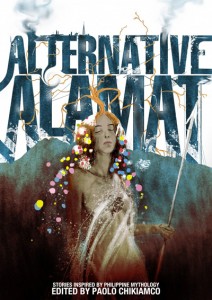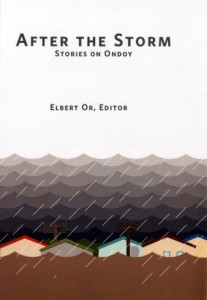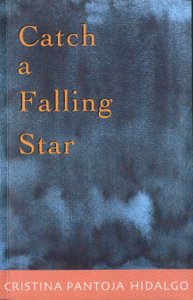
Alternative Alamat by Various Authors, edited by Paolo Chikiamco
Publisher: Rocket Kapre and Flipside
Number of pages:Â 174
My copy: ebook review copy from the editor
Philippine mythology is full of images that ignite the imagination: gods of calamity and baldness, of cosmic time and lost things; the many-layered Skyworld, and weapons that fight their own battles; a ship that is pulled to paradise by a chain, and a giant crab that controls the tides… yet too few of these tales are known and read today. “Alternative Alamat†gathers stories, by contemporary authors of Philippine fantasy, which make innovative use of elements of Philippine mythology. None of these stories are straight re-tellings of the old tales: they build on those stories, or question underlying assumptions; use ancient names as catalysts, or play within the spaces where the myths are silent. What you will find in common in these eleven stories is a love for the myths, epics, and legends which reflect us, contain us, call to us–and it is our hope that, in reading our stories, you may catch a glimpse, and develop a hunger, for those venerable tales.
* * *
When I was a kid, I had fond memories of reading about different Filipino legends for school. These legends were really made to teach a lesson to us kids to be nice, respectful and hardworking, really, and not just tall tales for bedtime stories. Most notable was the legend of the pineapple, which tells of a girl who felt lazy to look for what her mother was asking her to find and her exasperated mom wishes for her to have many eyes so she can find it and poof, she turns into a pineapple. I cannot remember, though, of a story talking about other Filipino legends, myths and epics other than the usual kiddie stories, save for Maria Makiling (the fairy that lives in Mount Makiling, one of the well-known mountains in the Philippines) and the Biag ni Lam-Ang (The Life of Lam-Ang), which I had to know because my mom is from Ilocos. So I was one of the people who knew almost nothing about Philippine Mythology that jumped at the idea of reading Alternative Alamat, a collection of stories from Filipino writers edited by Paolo Chikiamco (writer of High Society). Since I vowed to read and review more local fiction ever since I started this blog, I know I can’t miss this one.
The thing I like about anthologies is that it doesn’t require as much commitment as a full length novel does. You can read one story, stop and go back to the collection after some time without feeling lost. But the thing is, I never really wanted to stop reading Alternative Alamat because I keep getting surprised by the stories it contained. There were times when I thought that I wouldn’t like the story I was reading after a few paragraphs, and then I end up really liking it in the end because of some kind of twist. I think there’s something for everyone in each story in this collection. Ana’s Little Pawnshop on Makiling St. (Eliza Victoria) reminded me of those stories I read in our literary folio in college, with its YA-ish, magic realism charm. Harinuo’s Love Song (Rochita Leonen-Ruiz) and Keeper of My Sky (Timothy James Dimacali) with their lyrical prose, were haunting and sad tales of a love that shouldn’t have been and couldn’t be. There were stories that gave different perspectives on some of the Filipino goddesses all bearing the same first name Maria but all with different personalities: Conquering Makiling (Monique Francisco) for Maria Makiling, Beneath the Acacia (Celestine Trinidad) for Maria Sinukuan, and The Sorceress Queen (Raissa Rivera Falgui) for Maria Malindig. There were stories from legends that seemed like a stranger at first but then turns into something more familiar: Offerings to Aman Sinaya (Andre Tupaz) deals with how we have turned from the old fishing ways to the newer ones that destroy the oceans; Balat, Buwan, Ngalan (David Hontiveros) seemed like meta fiction of sorts since it mentions a book of local legends that was published and launched. Then there were the fun things, like alternate histories, that picks on the two times that the Filipinos fought back from the Spanish conquerors: The Alipin’s Tale (Raymond G. Falgui) and A Door Opens: The Beginning of the Fall of the Ispancialo-in-Hinirang (Dean Alfar). And if you have ever read any of the Trese comics, then you’re in for a treat here because The Last Full Show (Budjette Tan) is a story that shows a side of Alexandra Trese not shown in the comics. It’s hard to pick favorites among the stories because they each had something different to like about it — the writing, the treatment of the myth, the characters, the twists. There are also illustrations in the book too (done by cover artist, Mervin Malonzo), that are also based on Philippine myths and perfectly complements the content. It’s really a treasure trove of the things that make the Filipino culture so rich and colorful, and I’m pretty sure this is just the tip of the iceberg.
Alternative Alamat also contains a few appendices about notable Filipino deities, interviews with experts on the field, tips on researching Philippine myths and a glossary of terms. While it may seem that these things were included in the book for foreign readers, I think it’s also for Filipinos like me who know almost nothing about Philippine mythology. I think this makes Alternative Alamat more accessible to readers, regardless if you’re a Filipino or you’ve lived in the country for a while or you’re just a curious reader who’s interested in the title even if you have no idea where in the world the Philippines is.
Is there anything I don’t like about this? Well, I just wish that it was a little bit longer. I truly felt sad when I read that the anthology was closing with Dean Alfar’s story. But having this book out in the wild now doesn’t mean it has to stop there, right? After all, there is always an option for a second volume. ;) And also, a print version would be nice. So I can gift this to friends who refuse to get an e-reader. :D But other than that, there’s nothing else I would nitpick on. I think all the things I wrote up there sufficiently says how much I loved Alternative Alamat. I’ve never felt more prouder to be a Filipino when I was reading this. Somehow, I felt that this book and the stories in this collection were mine — mine because I am a Filipino and the stories found inside is a part of my heritage. :)
So if you’re one of the people who received an e-reader for Christmas, or you’ve had one for a while and you’re looking for something really new to read for the new year, then imagine me pushing, no, shoving this ebook to you. If you’re going to get one new ebook before this year ends or if you’re going to buy a new one as the 2012 comes in, make it Alternative Alamat. You won’t regret it, I promise. :)
Rating: [rating=5]
Book page: Alternative Alamat at Rocket Kapre
Buy a copy: Flipreads | Amazon | iTunes
Other reviews:
The Girl Who Read
Bookish Little Me

 After the Storm: Stories on Ondoy by Various Authors, edited by Elbert Or
After the Storm: Stories on Ondoy by Various Authors, edited by Elbert Or

